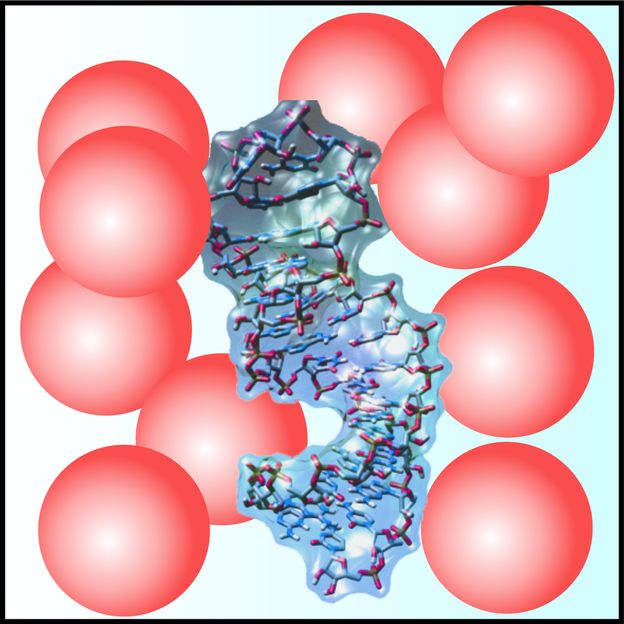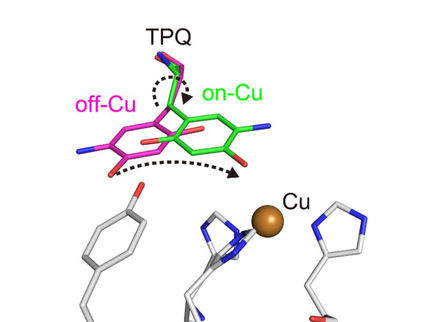Scientists Develop the First Atomic View of Key Genetic Processes
In a landmark study published in Nature, scientists have been able to create the first picture of genetic processes that happen inside every cell of our bodies. Using a 3-D visualization method called X-ray crystallography, Song Tan, an associate professor of biochemistry and molecular biology at Penn State University, has built the first-ever image of a protein interacting with the nucleosome -- DNA packed tightly into space-saving bundles organized around a protein core. The research is expected to aid future investigations into diseases such as cancer.
As the genetic blueprint of life, DNA must be deciphered or "read," even when densely packed into nucleosomes. The nucleosome is therefore a key target of genetic processes in a cell and a focus of scientific investigations into how normal and diseased cells work. Previous studies at Penn State and other research institutions led to the discovery of chromatin enzymes -- proteins that act to turn specific genes on or off by binding to the nucleosome. Since the three-dimensional structure of the nucleosome was determined 13 years ago, scientists have wondered how chromatin enzymes recognize and act on the nucleosome to regulate gene expression and other processes in a cell. "We needed to visualize how these enzymes are able to read such a complicated structure as the nucleosome," Tan said.
To tackle this problem, Ravindra D. Makde, a postdoctoral member of the research team led by Tan, grew molecular crystals of the protein RCC1 (regulator of chromosome condensation, a protein critical for proper separation of chromosomes during cell division) bound to the nucleosome, and used X-ray crystallography to determine the atomic structure of the complex. "Our results showed that the RCC1 protein binds to opposite sides of the nucleosome -- similar to pedals positioned on a tricycle wheel." The structure provides atomic details of how an enzyme can recognize both DNA and components of the protein core of the nucleosome. Unexpectedly, the structure also showed how DNA can stretch as it wraps into a nucleosome. "These findings provide the basis for understanding how RCC1 and other chromatin enzymes interact with DNA as it is packaged into chromatin in our cells," Tan said.
The investigations were performed at the Penn State Center for Eukaryotic Gene Regulation, a multidisciplinary center focused on understanding the molecular basis for how genes are turned off and on in our bodies. "For years, the research community has been at an impasse," said Frank Pugh, Director of the center and the Willaman Professor in Molecular Biology at Penn State. "We were limited to only speculating how cellular proteins might bind the nucleosome. Now, with this structure, we are one step closer to understanding how cells read chromatin to regulate gene expression."
After nearly a decade of working to this goal, Tan and his team are excited to see the intricate interactions between a chromatin protein and the nucleosome. They are, however, even more enthusiastic about future prospects. "Our goal now is to determine the structures of other biologically and medically important chromatin enzymes bound to the nucleosome," said Tan. "We anticipate such studies will explain fundamental genetic processes and provide the basis for new therapeutics against human diseases such as cancer."
In addition to Tan and Makde, other researchers who contributed to this project include Joseph R. England, a Penn State undergraduate when he started this research and currently an MD/Ph.D. student at Temple University, and Hemant P. Yennawar, a senior research associate in the Department of Biochemistry and Molecular Biology at Penn State. This research was funded, in part, by the National Institutes of Health.
Most read news
Topics
Organizations
Other news from the department science

Get the life science industry in your inbox
By submitting this form you agree that LUMITOS AG will send you the newsletter(s) selected above by email. Your data will not be passed on to third parties. Your data will be stored and processed in accordance with our data protection regulations. LUMITOS may contact you by email for the purpose of advertising or market and opinion surveys. You can revoke your consent at any time without giving reasons to LUMITOS AG, Ernst-Augustin-Str. 2, 12489 Berlin, Germany or by e-mail at revoke@lumitos.com with effect for the future. In addition, each email contains a link to unsubscribe from the corresponding newsletter.
Most read news
More news from our other portals
Last viewed contents
A-a_gradient
New Computational Tool for Rapid Identification of Disease-causing Variations in the Human Genome - Scientists from the University of Utah and Omicia Publish VAAST: Software to Identify Cause of Fatal Childhood Genetic Syndrome
Karyotype
Panniculus
Sandman
Mothball
Neuron






















































